The Michelin Guide is somewhat of a notorious annual publication within the food community, and can make or break a chef’s career. Each year, Michelin has its anonymous “inspectors” visit restaurants within a particular region for the purpose of rating and critiquing it. Michelin may then award up to three stars for outstanding dining (or remove existing stars if it feels the restaurant has dropped its standards). Restaurants with three Michelin stars are quite scarce, however are said to offer some of the best dining experiences in the world (often at exorbitant prices). Restaurant Abantal, located in the eastern parts of Seville, was my first time dining at a Michelin starred restaurant.
Upon entering the restaurant, we were greeted by a waiter who spoke English quite well. He took our jackets and showed us to the table. The interior decor was very simplistic, yet elegant, and very well illuminated. We were given a menu (including á la carte options), however we had already decided to order the nine-course tasting menu.
The first course was a beetroot soup with a piece of salt cured tuna. This dish was an amazing start to the night, and probably the most memorable dish overall. There was absolutely no doubting that the soup was made from beetroots (besides the brilliant pink colour, it had an intense flavour of beetroot) and the tuna paired so well with it. It was very much like beef jerky, but with fish instead of beef. The slight fishiness and the saltiness took the dish from being an ordinary beetroot soup to something on a whole new level.
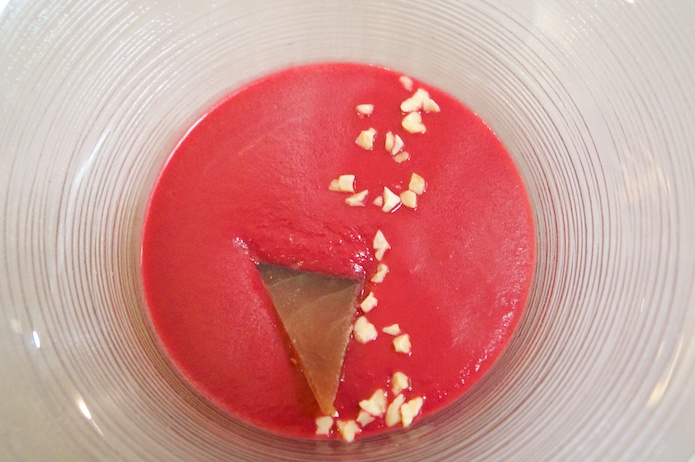
Beetroot cream, dried tuna and nuts
The next dish was a little more unusual. On top of a seaweed purée sat a prawn, some sherry jelly and tomato paste. The jelly was not too strong in flavour, but the taste of sherry was clear. Under the jelly were little pieces of lemon flesh, tomato paste and raw tuna, giving the dish little bursts of unexpected flavour and texture. This dish was a little weird, but still pleasant to eat.
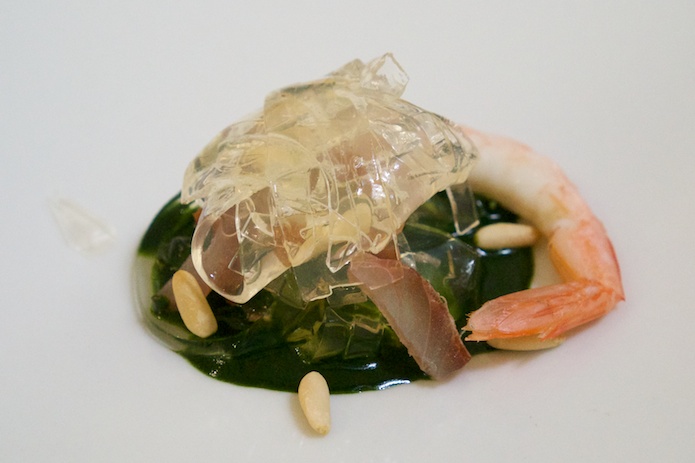
Prawn, sherry jelly, seaweed and tuna
Following was a dish that scared me a little bit at first. It looked almost like a dessert, until the waitress told us that it was a foie cream with peach compote and honeycomb. I have had foie (liver) enough times to know that it is rich and very strong. I was hoping deep down that the foie cream didn’t have too much punch, or else it was going to be a difficult dish to finish in its entirety. Thankfully, it turned out to be a very nice dish, and the foie cream was not overpowering at all. With the sweet peach compote and chewy honeycomb pieces it was actually very much like eating one of the yoghurt mixers that I ate as a child in school, with yoghurt in one compartment, fruit compote in another and maybe some muesli or nuts in a third–a little more sophisticated, though.

Foie cream, peach compote and honeycomb
The next few dishes were very good, although not really anything I hadn’t eaten before. The marinated pork was extremely tender, and had a great texture and flavour. The pork belly dish was quite spectacular, with perfectly cooked pork and mushrooms exactly as I like them: soft but still with some bite.
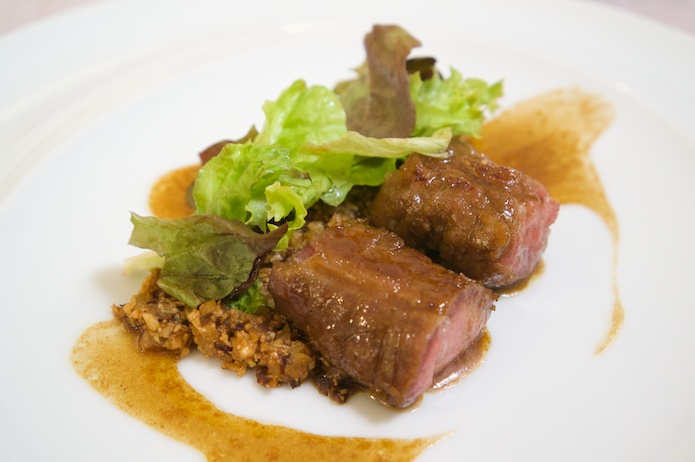
Lamb with dukkah
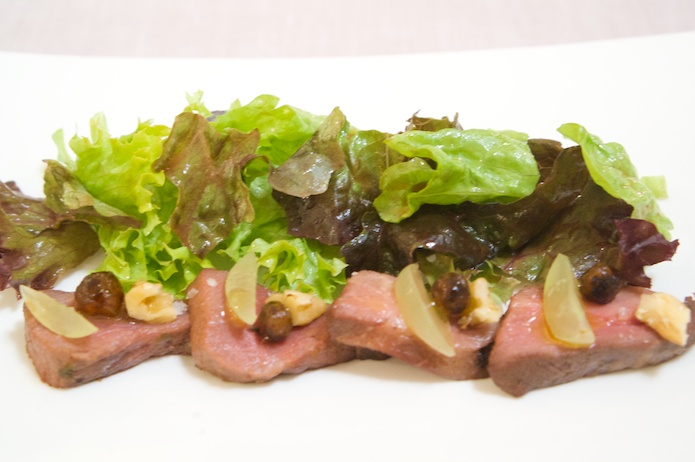
Marinated pork shoulder with grape, walnut and dried fruit
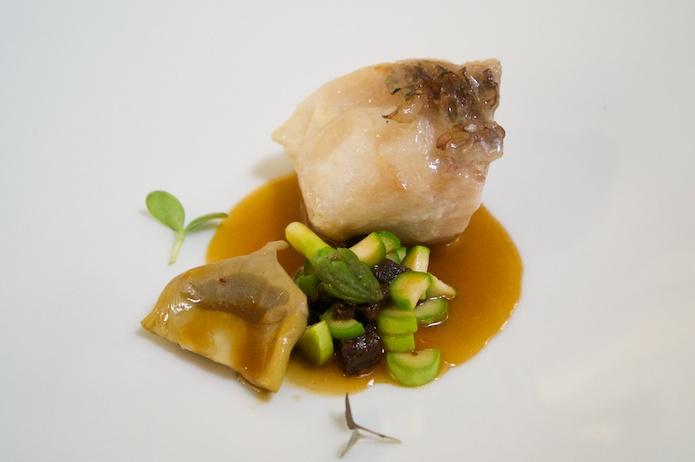
Snapper, artichoke, asparagus and black sausage
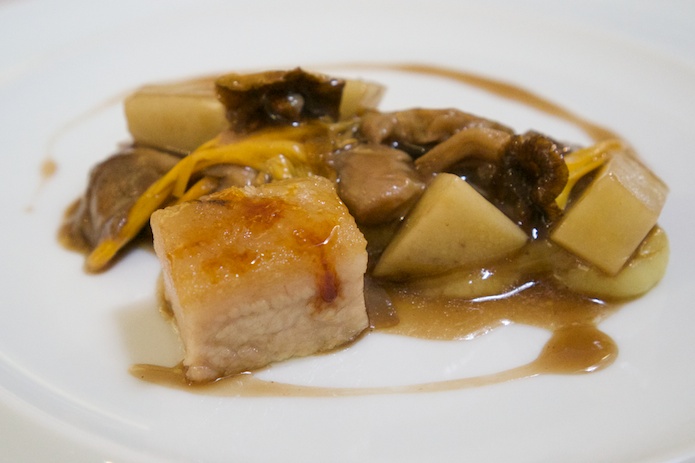
Pork belly with mushrooms, potatoes and potato purée
Now that the main courses were over, the desserts started coming out. The waitress informed us that there would be a pre-dessert followed by a dessert, although, judging by the size of each, I’m not sure why they called it a pre-dessert instead of just two dessert courses. The first, the “pre-dessert”, was a spiced soup (it tasted like cinnamon, maybe with a few other spices mixed in) with a scoop of ice cream and a pestiño (a deep-fried pastry often eaten in the southern parts of Spain). I had eaten probably too many pestiños while walking around the streets of Madrid and Seville, so I was very familiar with them by that stage, however I was all too happy to eat another. This pestiño was the best that I’d so far had, with a great melt-in-the-mouth and crumbly texture.
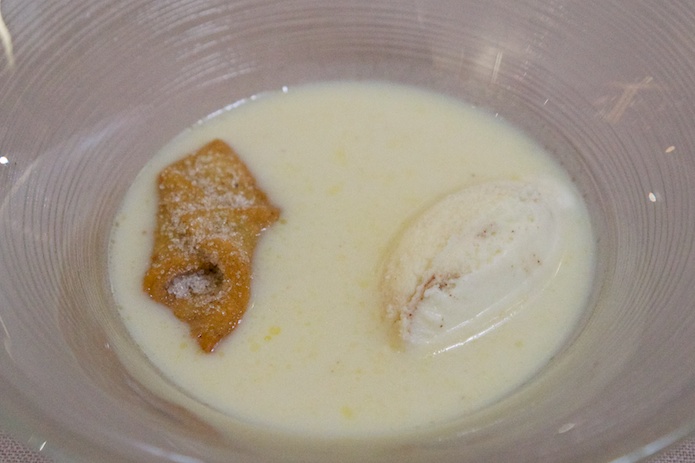
Pestiño and ice cream in a spiced soup
The final course was an orange and carrot sponge served with a chocolate cream and a thin chocolate biscuit. The sponge had a pretty much perfect texture, and the flavours were nice, but I couldn’t help but think about how uninteresting it was. I could go to just about any bakery in the city and find cake like this, so I was a little disappointed. The first dessert was by far my favourite of the two.
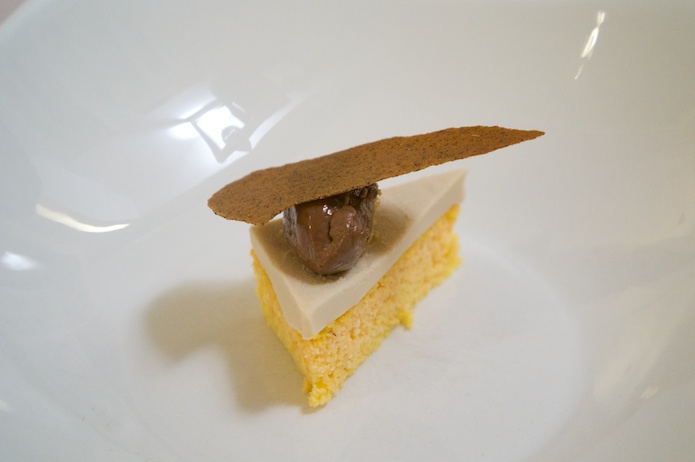
Orange sponge cake with chocolate
Finally, before leaving, we were offered coffee and some petit fours. On the plate were some chocolate cookies, a small glass of sweet spiced milk and a thin chocolate wafer.
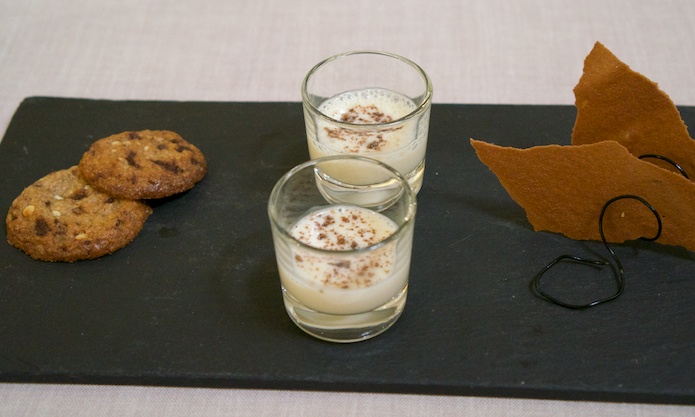
Double chocolate cookie, spiced milk and chocolate wafer
Overall it was a very enjoyable meal, albeit a little uninteresting at some courses. Normally the price (about 80 Euros each) is what I’d expect to pay by Australian standards, however it is hard to cough up this much money when there are so many places in Spain with food that is just as good, but half the price (many more posts to come in the near future about this). If you are doing a comprehensive food tour through Seville then Abantal is worth a visit, however for just a weekend I’d recommend going to some of the good tapas bars, where the food can be just as good, and at a fraction of the price.
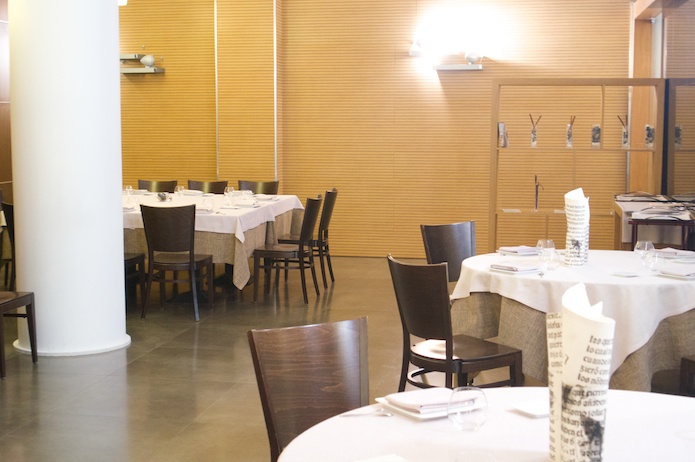
[…] varietal that I didn’t enjoy. This plate proved to be a key difference between Lluerna and my previous Michelin dining experience at Restaurant Abantal, where the cheese portions were microscopic and some cheeses borderline inedible (for me at least, […]